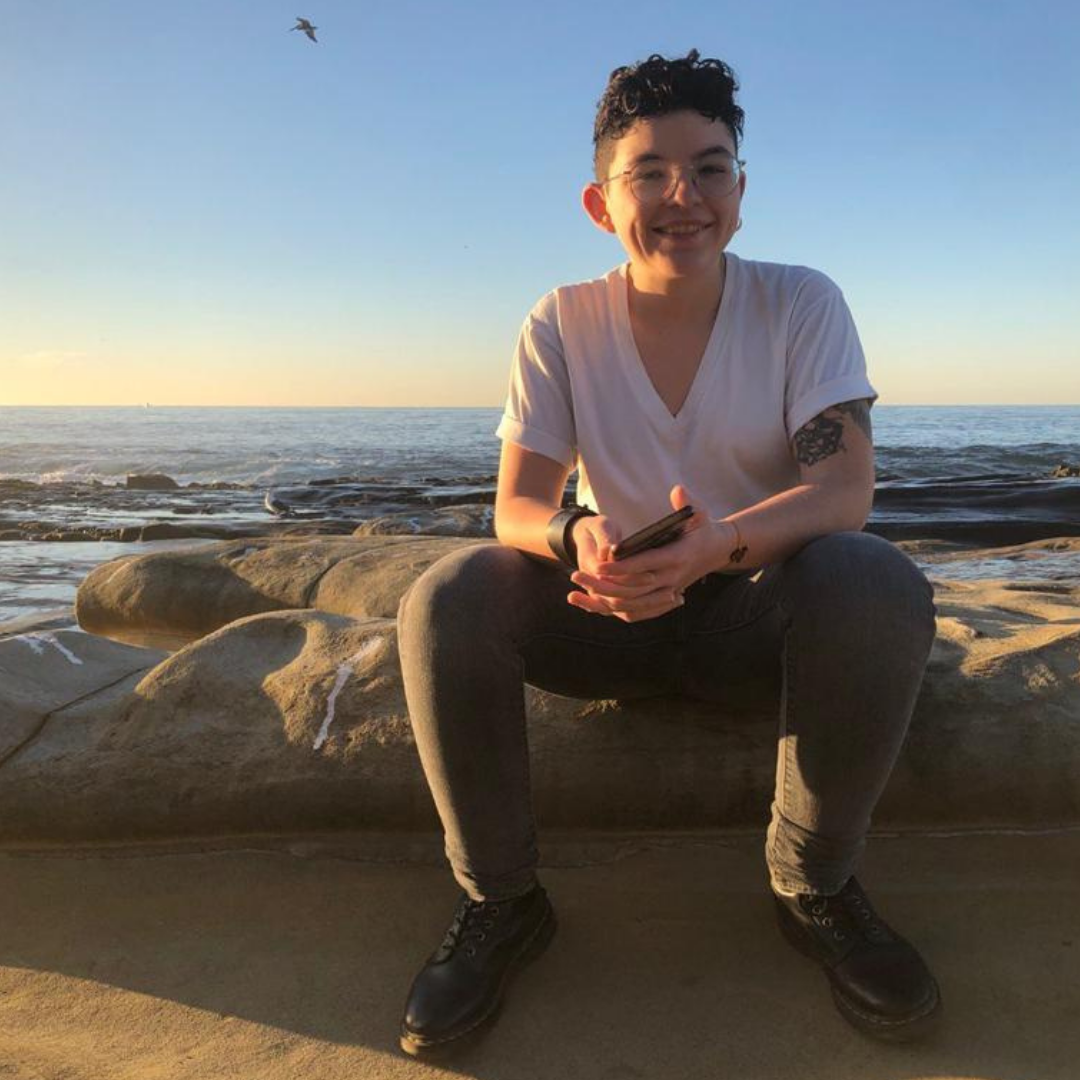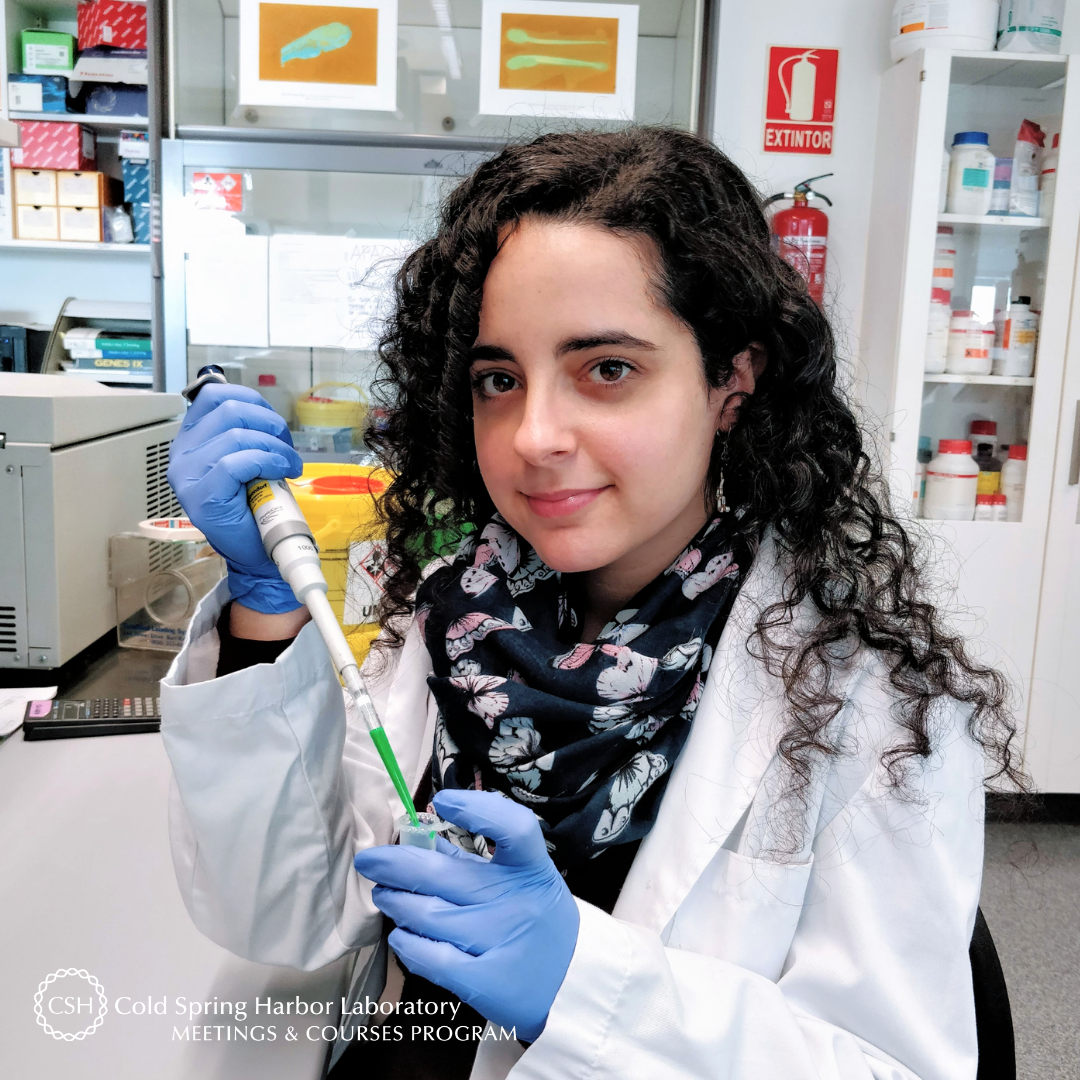
Meet María-Ángeles Bonmatí Carrión of the University of Murcia! She recently joined the Chronobiology Laboratory led by Juan Antonio Madrid and María-Ángeles Rol. The postdoctoral researcher joined us at the 85th CSHL Symposium this week which focuses on Biological Time Keeping. María-Ángeles presented a poster at the Symposium titled “Correlated color temperature and light intensity: Complementary features in non-visual light field”.
Tell us about your research.
My research is focused on how our body organizes its physiological processes through time (e.g., the sleep-wake cycle, body temperature, hormone secretion, motor activity) and non-visual effects of light, such as pupillary light reflex or melatonin suppression. I have also worked in developing tools and protocols to assess and palliate chronodisruption, which is when our body clock “gets broken” and our physiology becomes temporally disrupted.
How did you decide to focus on this area/project?
I find how biological variables oscillate through time to be a really interesting aspect of biology in general and of physiology in particular. It gives you a different perspective of physiological processes, where time becomes a central factor that has not been considered in most scientific approaches.

What and/or who is the inspiration behind your scientific journey?
In my case, it is really inspiring to observe how our body and the environment change across the day or longer periods, and how they both synchronize to maximize the biological functionality. The fact that circadian rhythms are so well conserved through evolution is also a reflection of their importance for the surveillance of the organisms. I have to thank several chronobiology/sleep scientists that have inspired and helped me through this journey, such as Profs. Juan Antonio Madrid, María-Ángeles Rol, Debra Skene, Simon Archer and Derk-Jan Dijk.
What impact do you hope to make through your work?
I would like my research to have a positive impact on the health and wellbeing of general and sensitive populations, through scientifically-based recommendations.
Where do you see yourself in five years?
I would like to lead my own group and also to explore other fields related to sleep and circadian rhythms, such as the effects of other environmental stressors and the pathways involved.
What do you love most about being a researcher?
I love discovering different aspects of our physiology that can help people to improve their wellbeing and health. I also love the feeling of learning new things all the time!
What drew you to attend this meeting?
I had the feeling that by attending this meeting, I would be able to learn a lot from renowned scientists in this field. I also wanted to share with other scientist a small part of what we do in our laboratory.
What is your key takeaway from the Symposium; and how do you plan to apply it to your work?
I had the chance to get knowledge about many molecular advances that I am planning to apply to my work in humans; which, at present, is mainly focused in physiology.
What’s the most memorable thing that happened during the Symposium?
All the talks were amazing and really interesting and I am very happy to have the honor of listening to renowned researchers such as Joseph Takahashi and Michael Rosbash. It is also exciting to see more junior researchers leading really interesting projects that are contributing in a great manner to the development of Chronobiology. The In Memoriam session was very moving, dedicated to three essential researchers: Michael Menaker, Michael Hughes and Paolo Sassone-Corsi.
Images provided by María-Ángeles Bonmatí Carrión





























